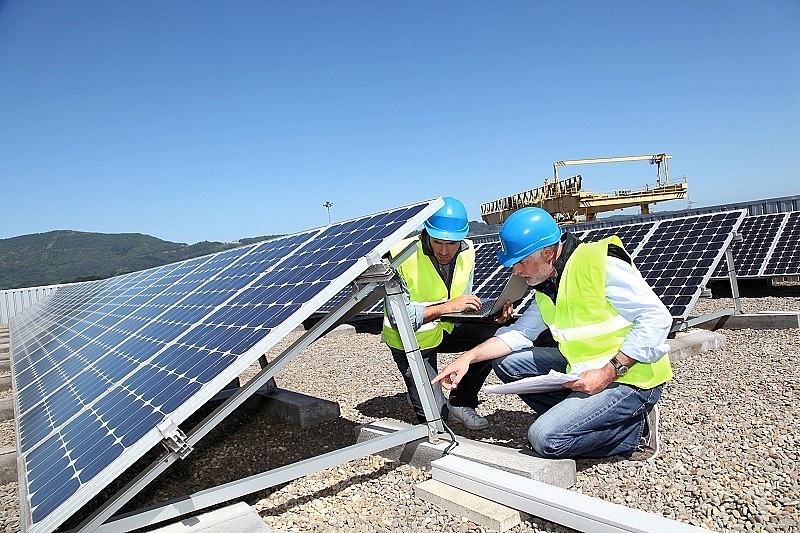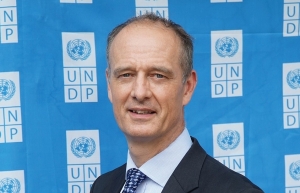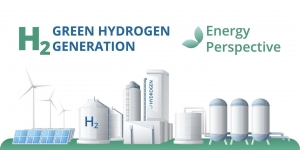Studies underway to guide Vietnam’s energy transition
 |
| Studies underway to guide Vietnam’s energy transition, illustration photo/ Source: Shutterstock |
Nguyen Xuan Trung, a senior expert from the Institute of Energy (IoE) under the Ministry of Industry and Trade (MoIT), said that for Vietnam to successfully reach its net-zero commitments by mid-century, the country will need a huge financial injection of as much as $650 billion, with the vast majority for the transition from coal-thermal power generation to sustainable alternatives.
“This amount of money is too big for the country’s national conditions, but it can become true with the support from the international community,” Trung said at a technical meeting about such a transition hosted last week by the United Nations Development Programme (UNDP) in Vietnam.
Under the IoE’s calculations, in Vietnam, electricity production is now taking the lead in greenhouse gas emissions, accounting for 29.1 per cent of the country’s total. To achieve net-zero emissions by 2050, the energy industry will have to cut 32.6 per cent of emissions, in which coal-fired thermal power plants must cut 43 per cent.
By late 2022, the total coal-fired thermal power plants’ capacity stood at more than 25,300MW, responsible for 32.5 per cent of the nation’s total power capacity.
“The target is that by 2050, no coal will be used for power generation, with all coal-fired power plants transitioning to sustainable alternatives such biomass and ammonia, which is carbon-free and composed of green hydrogen and nitrogen,” Trung said.
Under the Power Development Plan VIII, continued implementation will be allowed for power projects which are listed in the previous iteration, and will be invested towards 2030.
Along with that, all plants that have been operating for 20 years will have to transition from coal to biomass and ammonia. All plants that have been operating for 40 years or more will have to stop operations if they fail to change fuel.
“However, no specific roadmap has been made,” Trung said. “It is necessary to formulate such a roadmap for coal-fired plants. It will cover the list of plants needing transition, the time for transition, financial needs, human resources, and environmental impacts.”
Transition
Vietnam’s economic performance is enviable, achieving close to 6 per cent annual GDP growth since 2010. At the same time and over the same period, coal consumption rose at an average rate of 11 per cent per year, the fastest growth in Southeast Asia.
Today, coal power generation from some 38 plants accounts for 46 per cent of the country’s power supply. This reliance poses significant challenges for the decarbonisation of the energy sector, dependence on imports, and air pollution.
“To meet Vietnam’s global commitments to net-zero, ceasing the issuance of new permits for the construction of unabated coal-fired power generation, and the transition of Vietnam’s coal power plant fleet will require concerted efforts, especially as we grapple with plants today nearing their end of life,” said Ramla Khalidi, resident representative in Vietnam of the UNDP.
To inform these difficult choices, the UNDP and the IoE have developed case studies to assess energy transition scenarios of coal-thermal power plants in Vietnam, focusing on the Pha Lai, Cao Ngan, and Van Phong plants, evaluating the costs and benefits potentially incurred.
The study is intended to help formulate bankable proposals for decommissioning, repurposing and/or refurbishing of these plants, inclusive of timelines, for scenarios such as co-firing with biomass and ammonia, solar photovoltaic combined with battery energy storage, and flexible gas turbines.
The study explored viable transition pathways for Vietnam’s major coal-thermal power plants, assessing the potential impacts, costs, and benefits of various energy conversion options.
Strategies such as biomass co-firing, liquefied natural gas conversion, and the integration of renewable resources were evaluated alongside innovative technologies like battery energy storage systems (BESS) and carbon capture, utilisation, and storage.
The report on Pha Lai includes two coal-fired thermal power plants: Pha Lai 1 and Pha Lai 2. Pha Lai 1 is the oldest of the two, operating for approximately 40 years.
The study has proposed the possibility of integrating suitable transition technology to cleaner technology, such as flexible gas turbine units combined with BESS and solar power. “We are under great pressure so that by 2026, we will have to place Pha Lai 1 into transition, but currently have no capital,” said Mai Quoc Long, chairman of Pha Lai Thermal Power JSC’s Board of Directors. “We hope the government, the MoIT, and international organisations will help us with capital for the transition.”
Meanwhile, Pha Lai 2, with a capacity of 600MW and 23 years of operation, also must change; otherwise it may be closed within the next 10 years.
Some pathways considered for Pha Lai 2 include ammonia co-firing or flexible gas turbines, BESS combined with flexible gas turbines and solar power, or BESS combined with gas turbines and SynCON.
These strategies are not only environmentally beneficial by significantly reducing emissions, but also crucial for enhancing the energy security and sustainability of the region.
In the case of Cao Ngan, near the northern city of Thai Nguyen, stricter environmental standards will be required. The study emphasises the plant’s capacity for integration with renewable energy sources.
It pointed to the potential for a seamless blend of solar and wind energy into the existing power generation system, enhanced by innovative related technologies. This approach could be a model for balancing energy production with environmental conservation, according to the UNDP.
Meanwhile, the Van Phong 1 build-operate-transfer coal-fired power plant, a new and large coal-firing power plant, is at a convenient location for integrating solar photovoltaics, co-firing biomass and coal to entirely change to biomass firing.
The analysis delved into various transition options, including pioneering use of small-scale nuclear power and the repurposing of the plant to accommodate emerging tech.
The plant is near the Phu Khanh oil reservoir, which can be used for CO2 storage and isolation. Such transformative measures align with Vietnam’s emission reduction goals and promise to invigorate local economies and spur technological innovation. However, according to the study, legal issues related to the contract will arise with any proposed solution, requiring renegotiation.
International assistance
A few months ago, Vietnam announced the resource mobilisation plan for the Just Energy Transition Partnership (JETP).
Vietnam will receive support via the partnership to reach its commitment net-zero emissions by 2050 through accelerating the decarbonisation of its electricity system by reaching a peak of no more than 170 metric tonnes CO2e emission from electricity generation by 2030; peaking coal-fired generation capacity at 30.2GW; accelerating deployment of renewable energy to at least 47 per cent of electricity generation by 2030; and leading a just transition.
“One of the next steps that could be applied under the JETP is a transparent, clear, and accessible financial mechanism for businesses to have facilitated access to equity and banking finance, in turn reducing barriers and credit risks,” said Khalidi of the UNDP.
It is also noted that plant conversions can result in negative socioeconomic consequences. A sizeable number of workers employed directly or indirectly by coal mining activities, transportation, and power generation, particularly across remote areas, may be impacted by a full coal phaseout.
“To guard against community disruption, especially among unskilled labourers and those over the age of 40, adequate consultations, re-training programmes and interventions to ensure affordable electricity prices for low-income groups are crucial,” Khalidi said.
 | Elements of a green hydrogen future Vietnam’s economy and sustained growth rate, has attracted attention, achieving a swift economic expansion. |
 | Vietnam showing special interest in hydrogen Hydrogen is one of Vietnam's priority areas as it focuses on implementing a green transformation strategy for the upcoming decades, according to Prime Minister Pham Minh Chinh. |
What the stars mean:
★ Poor ★ ★ Promising ★★★ Good ★★★★ Very good ★★★★★ Exceptional
Related Contents
Latest News
More News
- Honda launches electric two-wheeler, expands charging infrastructure (January 12, 2026 | 14:00)
- Vietnam striving to ease air pollution (January 09, 2026 | 14:41)
- Petrovietnam Gas awards first multi‑year LNG deal to Shell (January 09, 2026 | 14:38)
- Advancing the net-zero journey: Carlsberg Vietnam’s sustainability progress in 2025 (January 09, 2026 | 09:49)
- The green hydrogen and ammonia future for Vietnam (January 06, 2026 | 15:03)
- Green transition to close $20 billion annual investment gap (December 31, 2025 | 11:59)
- Australia contributing to Vietnam’s climate change responses (December 30, 2025 | 11:37)
- CME Solar strengthens position in Vietnamese renewables (December 30, 2025 | 11:21)
- Self-care signals shift towards sustainable healthcare (December 30, 2025 | 10:12)
- GreenYellow marks five years of clean energy growth in Vietnam (December 26, 2025 | 15:51)

 Tag:
Tag:





















 Mobile Version
Mobile Version